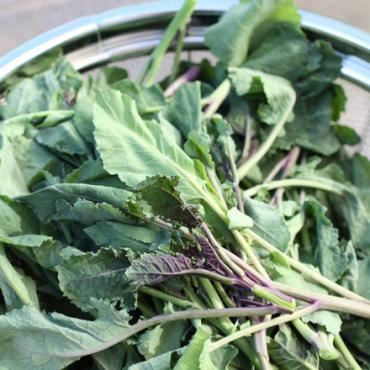
Maragoli Traditional Vegetables-Know Your Food!
A healthy proportion of Maragoli traditional vegetables can be considered ‘edible weeds’. However, the majority of traditional Maragoli vegetables are cultivated on purpose. Cultivation occurs either in the main farm or among the bananas in the kitchen garden. Likhubi (cowpea) and bean leaves (makhalaba) are the main field varieties. Whereas murere, mitoo, lisebebe, libokoyi and tsisaka are cultivated and harvested from the kitchen garden.
Likhubi

Scientific name for likhubi is Vigna unguiculataa. Common name is cowpea in English and kunde is Swahili. So popular is likhubi that it is often commonly cultivated commercially. There are two types of Likhubi. The fist type known as ilande is planted in October – December during the short rains. Its cultivation goes on upto until the start of the long rains in March. The second type is known as inzekhu in Isukha is a shorter crop that thrives during the long rains of March – May and is harvested from May – August. The seeds of inzekhu variety are often mixed with those of beans and together, they are inter-cropped with maize.
Liseveve
This is your everyday pumpkin leaves. Liseveve comes second only to likhuvi in popularity. However, unlike likhuvi, liseveve is often cultivated in the kitchen garden as opposed to the open fields. Seveve is best cultivated towards the end of the rainy season. This is because its seed sprouts better when the soils are draining well and not water logged. However once sprouted, unlike likhuvi which is affected by too much rain, liseveve thrives with wetness. 
Mitoo or Imitoo
Mitoo is a less popular Luhya traditional vegetable of the Crotalaria spp. The two species that are commonly used as a vegetable is the Crotalaria brevidensa, commonly known as Sunhemp. The other is Crotalaria ochroleucaa, commonly known as Giant sunhemp. The former C. brevidensa is what gives mitoo its bad name as it is a particularly bitter vegetable that needs some getting used to. The later, C. ochroleucaa is becoming a new favorite among younger generations as it is much less bitter.

The second reason why mitoo isn’t a favorite currently among Maragoli traditional vegetables is the trouble one goes trough plucking its tiny leaflets of the stem. Woe unto you if the mitoo isn’t fresh from the shamba and has been allowed to wither! I don’t envy you.
Mrenda or Murere
Thi is the most notoriously famous of Maragoli traditional vegetables – given its slimy, somewhat runny appearance when cooked. For the uninitiated, its okra-like appearance requires some convincing for one to try out. However, I urge you not to be put off by the appearance. In truth, murere is a quite a delight.

Tsisaga
Also known as spider plant a very popular Maragoli vegetable. As the English name suggests, its hairy purplish stems reminds one of the limbs of a spider. Nonetheless, its appearance shouldn’t discourage first time consumers from trying it out. It’s indeed a tasty vegetable.

Livogoyi
Libokoyi is the wide variety of vegetables principally belonging to the Amaranthus species.

Ikanzira
Another of the what can be classified as ‘royalty’ of Luhya traditional vegetables. The scientific name of ikanzira is Brassica carinata. When in the market anywhere in Kenya, ask for khajira/ kanzira. This vegetable also known as the Ethiopian kale has more ‘depth’ in taste than your everyday kale. It’s delicate aromatic (mustard -like) flavors go well with lisustsa (Isukha). As it helps balance the bitter taste of the former.

Lisutsa or Risuza
Risuza is known a traditional vegetable known as black nightshade in English and managu in Gikuyu. In the recent past, this vegetable has grown in popularity as less bitter variants (Solanum scabrum) have been propagated and cultivated.
There are four types that are commonly consumed: Solanum villosum, Solanum niqrum, S. scabrum and S. americanum. Lisustsa has found commercial success in Kenya although a variety of these vegetables are gathered in the wild. Perfect when cooked with milk or cream and left overnight before consumption.

Magaraba
These are the leaves of your everyday beans. This is not a favorite and is eaten only when other vegetables are scarce. In truth, when you find a people feasting on makhalaba, often is the case that there is widespread communal scarcity of food. Or that a particular family is hard up and thus cannot afford to buy exotic vegetables from the market.

Inderema
There is an indoor climbing plant known as the ‘money plant’. If you grew up in a home with one, then you might be able to recognize inderema in the wild. This is because in appearance, inderema can be said to resemble a min miniature version of a money plant.

However, when cooked as a vegetable, inderema assumes a slippery consistency kind of that of murenda. Commonly, inderema is known as the Indian spinach.
